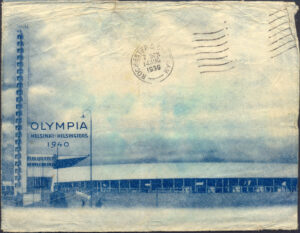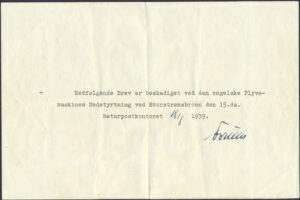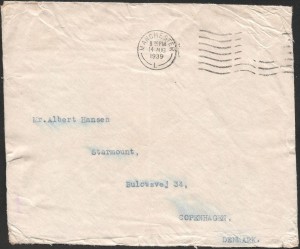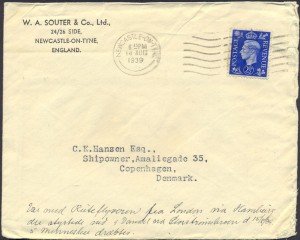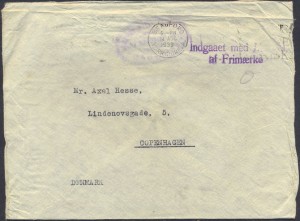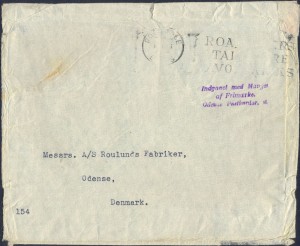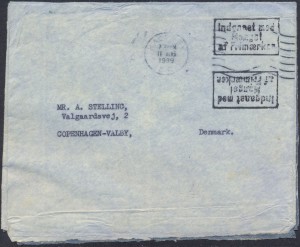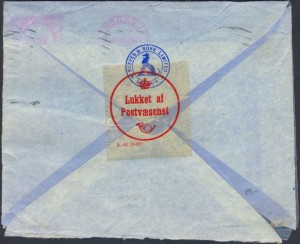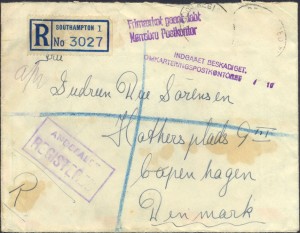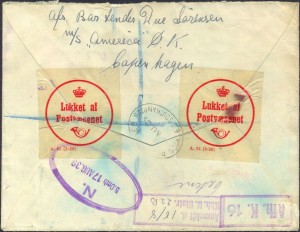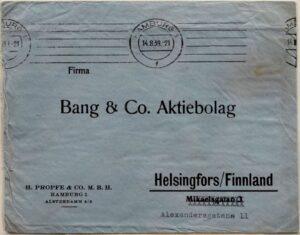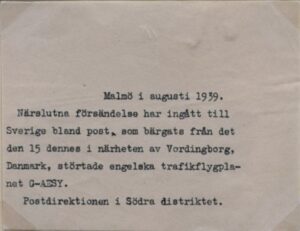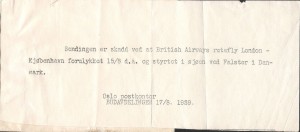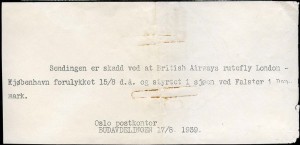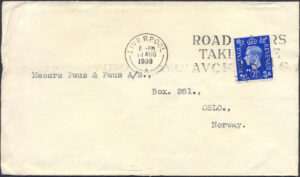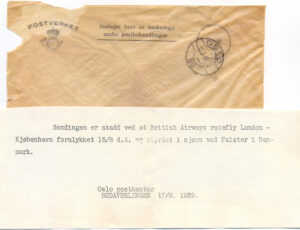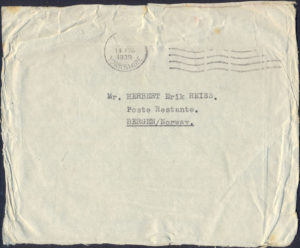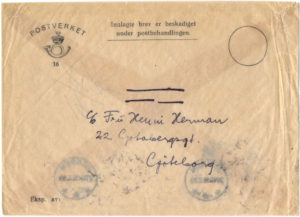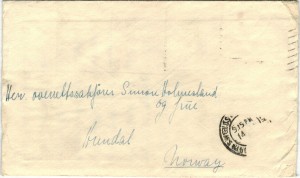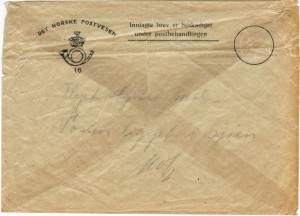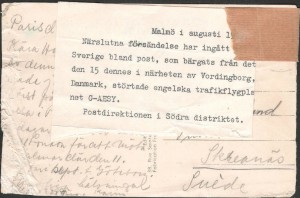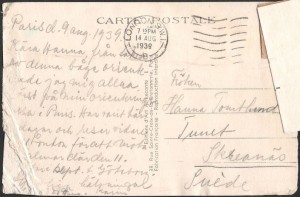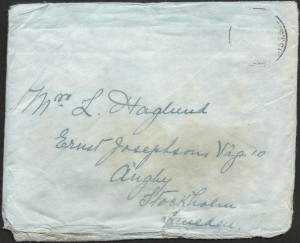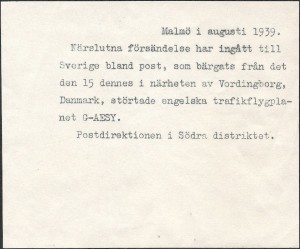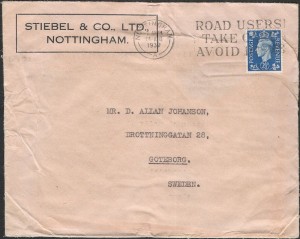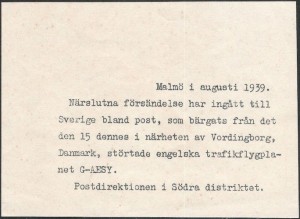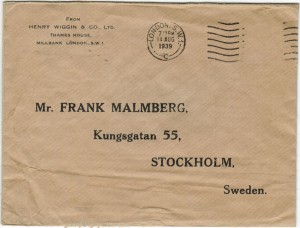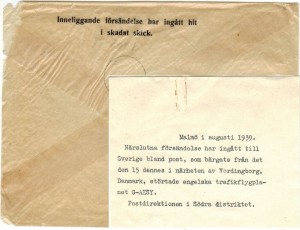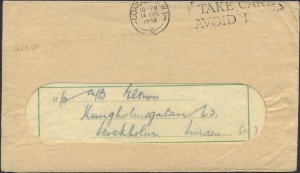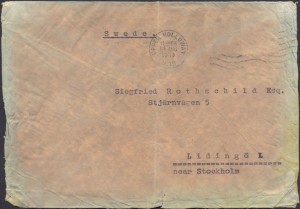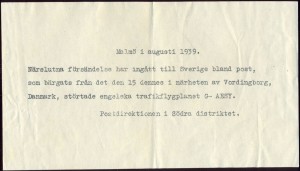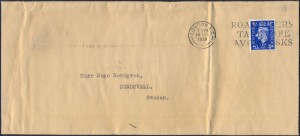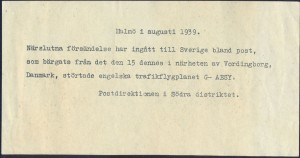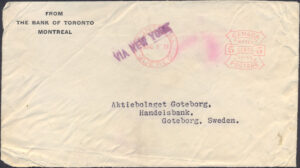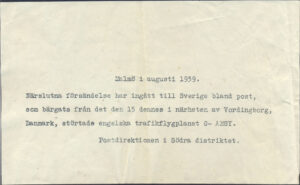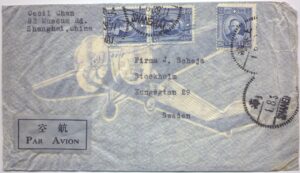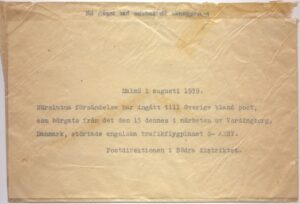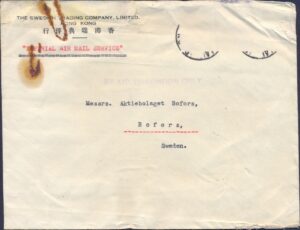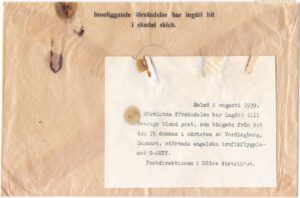| Crash site | Vordingborg, Denmark |
| Airline | British Airways |
| Aircraft | Lockheed 10A Electra – G-AESY |
| Route | London/Heston – Hamburg – Copenhagen – Stockholm |
| Crew | 2 – 1 survivor |
| Passengers | 4 – 0 survivors |
The crash
The plane left Heston airport on schedule at 09:00. While nearing Copenhagen a fire broke out and soon the cabin was full of smoke. The pilot decided to make a forced landing in the strait between Falster and Zealand south of Vordingborg and close to the Storström bridge. The plane hit the water between 13:20 and 13:30. A cockpit window was broken and the captain was able to crawl out of the cabin. He tried to open the passenger door, but the plane sank rapidly in 17 m of water. Rescue boats soon arrived at the crash site, but the wreck was difficult to locate. It was found later in the evening. The wreck was raised the next day.
The crash report concluded that the fire was caused by leakage of gasoline from the overflow tanks, which in turn must have resulted from the overfilling of its fuel tanks. The cause of the ignition of the fuel could not be determined.
The mail
On board the plane was a large load of mail destined for Denmark, Finland, Norway and Sweden. The majority came from Great Britain. Mail from other countries is rare.
Number of items in my records:
| From | To Denmark | To Finland | To Norway | To Sweden |
| France | 1 | 0 | 0 | 0 |
| Germany | 0 | 1 | 0 | 0 |
| Great Britain | 40 | 1 | 20 | 62 |
| Canada | 0 | 0 | 0 | 1 |
| China | 0 | 0 | 0 | 1 |
| Hong Kong | 1 |
Vogt mentions that a cover from Ireland might exist in a British collection.
Who is the lucky owner of this cover?
All the mail was salvaged, but a large part was in very watersoaked condition and stamps are often missing.
Around 12.000 items destined for Sweden were sent to the Swedish Southern Postal District in Malmö where it was sorted out and forwarded.
A variety of Nordic crash markings are known. The Norwegian and the Swedish Post both produced special labels which explained about the crash. The Danish Post forwarded the mail without any notice at all, which led to criticism from the public.
A.
Many of the larger post offices in Denmark had a handstamp to be used on mail where the stamp for some reason was missing. The most common text was Indgaaet med mangel af Frimærke = Arrived with lack of stamp. Another variation has the text Frimærket gaaet tabt = Stamp lost. These handstamps can sometimes be found on mail from this crash. A few examples are shown here. You can see more below under Examples of mail.
 |
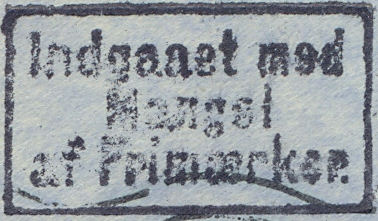 |
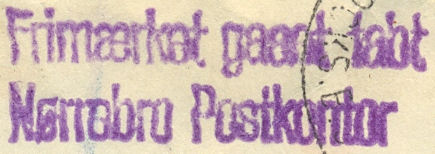 |
| Odense Post Office | Valby Post Office | Nørrebro Post Office |
B.![]()
Danish handstamp.
Violet.
Size: 64 x 7 mm.
Text translation:
Arrived damaged.
Sorting Post Office / 19
C.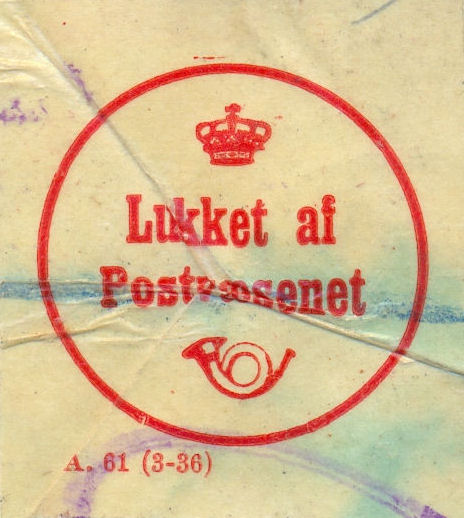
Danish resealing label.
Type A. 61 (3-36).
Red printing on transparent paper.
Size: 40 x 45 mm.
Text translation:
Closed by the Postal Service.
D.
The general public in Denmark was unsatisfied with the fact that the mail from the crash was forwarded without any explanation from the Danish Post. No Danish labels have been recorded until recently when I was very lucky to find a couple of covers with the label illustrated below.
Translation of text: The enclosed cover is damaged in the crash of the English airplane at the Storström bridge on 15. this month. Return mail Office / 1939. Manuscript date and signature.
Two covers are known with this label. Both are so water damaged that neither the sender nor the recipient can be read.
Size textblock: 152 x 20 mm.
E-a.
Norwegian label.
Size textblock: 174 x 42 mm.
E-b.
Norwegian label.
Size of textblock: 174 x 50 mm.
F.
The Swedish Southern Postal District in Malmö produced labels to be used with mail that was forwarded to the recipients. The text was in Swedish language and can be translated to “Malmö in August 1939. Enclosed item has arrived in Sweden among mail recovered from the English airplane G-AESY which crashed on 15 this month near Vordingborg, Denmark. The Postal Direction in Southern District.”. The size of the labels vary as they were printed on large size paper and later cut from the sheets. Even if the text is the same I have recorded 5 variations in the arrangement of the text:
F-a.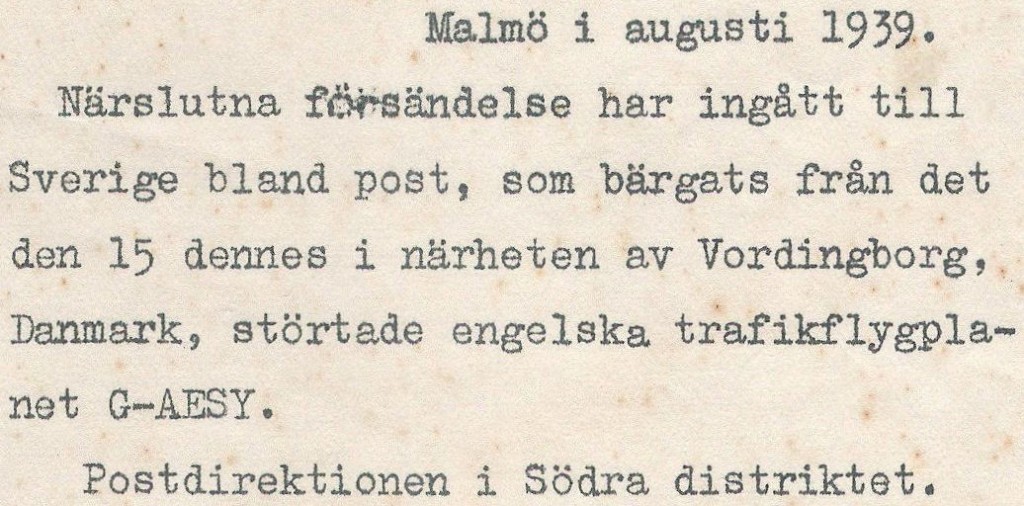
Size textblock: 86 x 42 mm.
Point after first line is above the
first l in till.
F-b.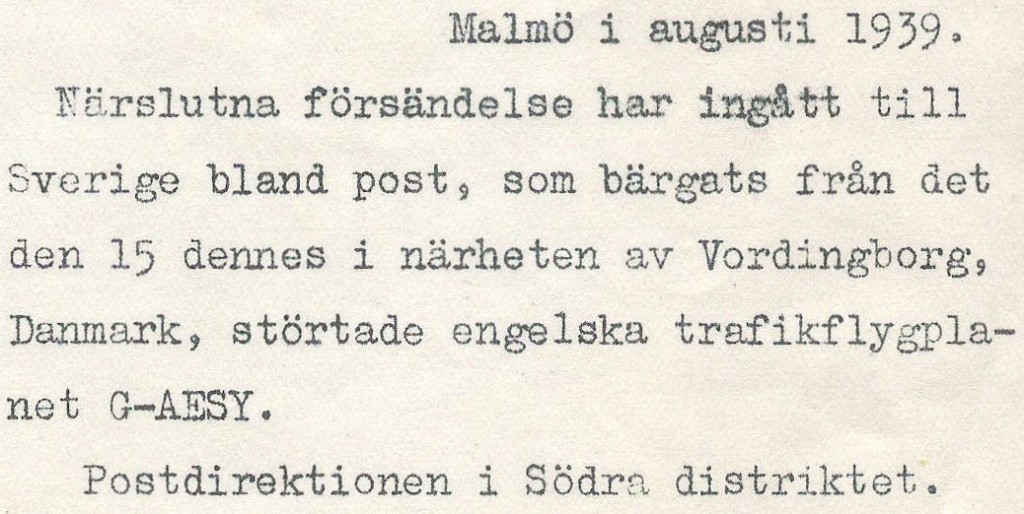
Size textblock: 86 x 42 mm.
Point after first line is above
the second l in till.
F-c.
Size textblock: 108 x 30 mm.
Straight left margin.
No point after Distriktet
I have only seen one example
of this type.
F-d.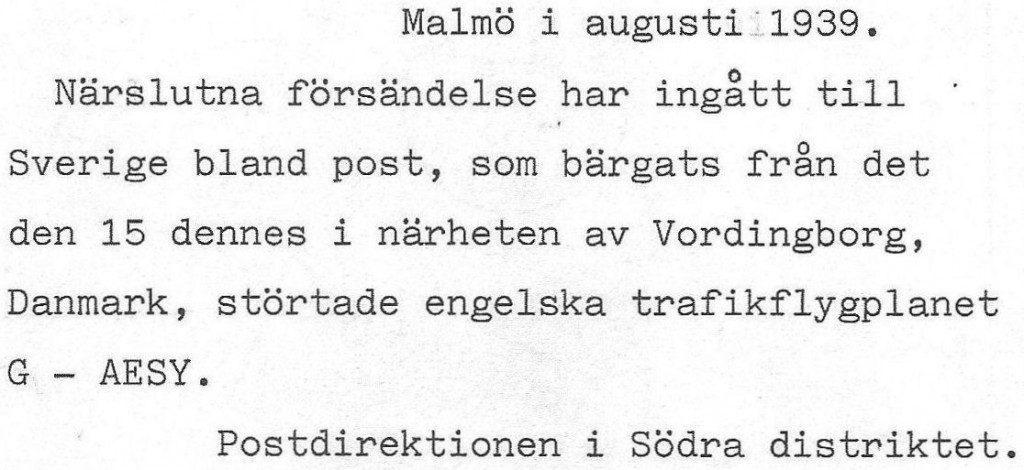
Size textblock: 110 x 42 mm.
G – AESY with space on
both sides of the hyphen.
This type is illustrated by
Nierinck (reconstructed)
Not seen.
G-a.
Only five textlines.
Size textblock: 154 x 42 mm.
Service Covers
The use of service covers has been recorded on Danish, Norwegian and Swedish mail. A detailed study is under way.
Denmark – Rarely used. Only one example recorded.
Norway – Very often used. Many different types (at least 4 different).
Sweden – Two different types were in use.
Examples of mail



